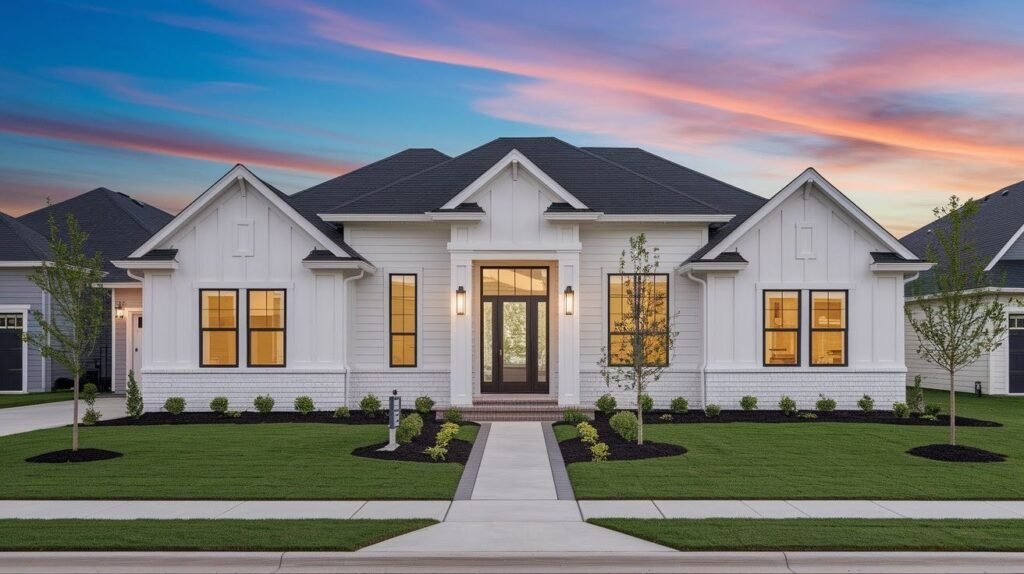Thinking about painting your house exterior yourself? You could save $3,000-$8,000 compared to hiring high-quality. But mistakes can cost even more.
This guide covers proper prep work, paint selection, and application techniques. You’ll learn timing tricks and weather considerations for high-quality use.
We’ll help you avoid costly mistakes that cause peeling and fading. Poor prep work and wrong choices lead to expensive do-overs within two years.
I’ve painted dozens of exteriors and seen every mistake possible. I know which shortcuts work and which fail.
By the end, you’ll paint like a pro without the price tag. No peeling. No mismatches. Just lasting results.
11 Exterior House Painting Tips
Weather determines exterior painting success, so check five-day forecasts for dry, low-humidity conditions and avoid rain, extreme heat, or cold.
Weather and Timing Considerations
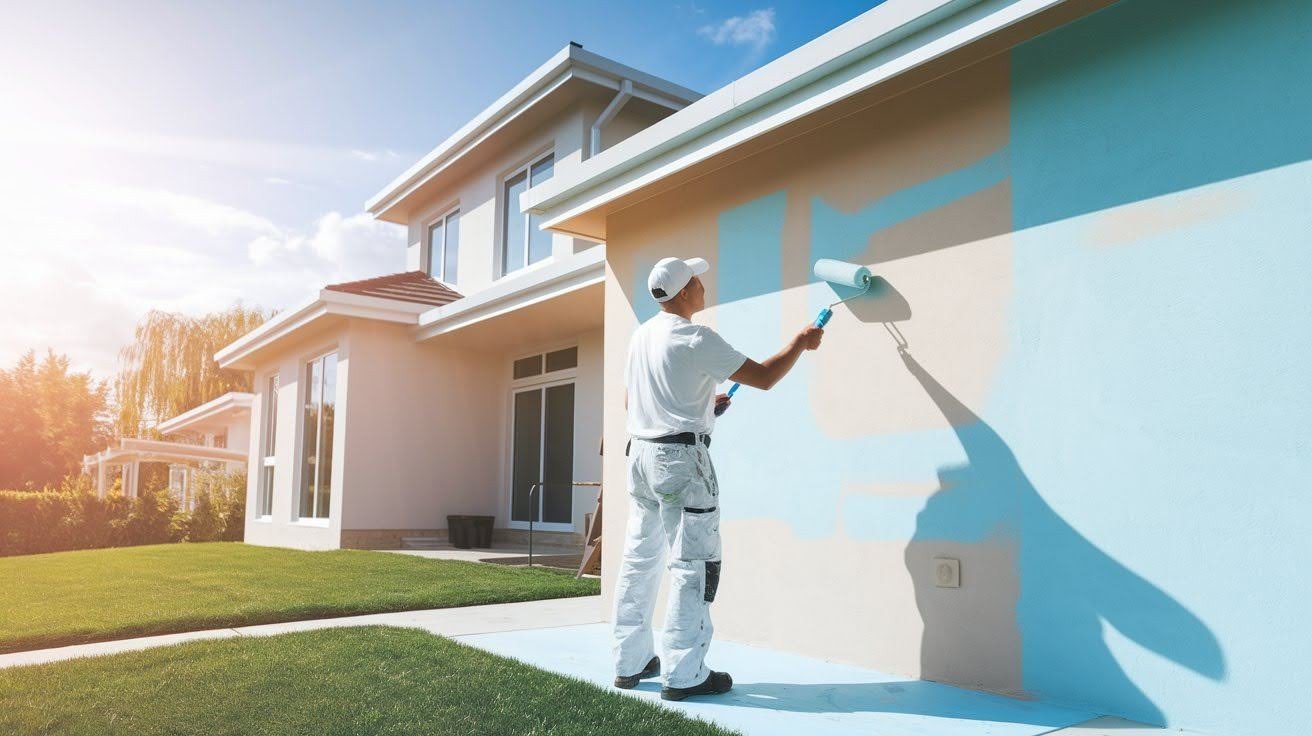
Weather makes or breaks your exterior painting project. I’ve seen too many homeowners rush into painting during bad conditions. The result is always peeling paint within months.
Check your weather forecast for at least five days ahead. You need dry conditions with low humidity. Avoid painting when rain is coming or when it’s extremely hot or cold.
Summer is peak season for exterior painting companies for good reason. The weather stays stable longer. Paint dries properly and sticks better to surfaces.
Essential Prep Work Investment

Prep work is the most important part of exterior painting. Spend a full day on preparation, and your paint job will last for years. Skip it, and you’ll be repainting in two years.
Pressure wash your house at least 48 hours before painting starts. This removes dirt, mildew, and grime that prevent paint from sticking. Clean surfaces mean better adhesion and longer-lasting results.
Surface Inspection and Repair

Walk around your house and look for damage during cleaning. You’ll find chipped paint, rotten wood, and cracks that need fixing. Mark these spots with tape so you don’t forget them.
Sand and scrape all damaged areas down to the solid surface. Paint won’t stick to loose, chipped, or cracked areas. Replace rotten wood sections completely. Fill holes with epoxy filler and gaps with exterior caulk.
Investing in Quality Paint

Higher-quality paint costs more upfront but saves money long-term. Cheap paint has less pigment and fades faster. You’ll repaint sooner, which costs more in time and materials.
Modern paint technology offers better color guarantees than ever before. Quality paints resist fading and weather damage. Don’t let price tempt you into buying cheap paint that fails quickly.
Primer and Paint Combinations

You can buy primer and paint separately or get combination products. The traditional method uses primer first, then paint. Modern combination paints include primer already mixed in.
Combination paints cost more but save time and effort. You apply fewer coats and get good coverage. Compare total costs, including your time, before choosing your approach.
Color Selection and Testing
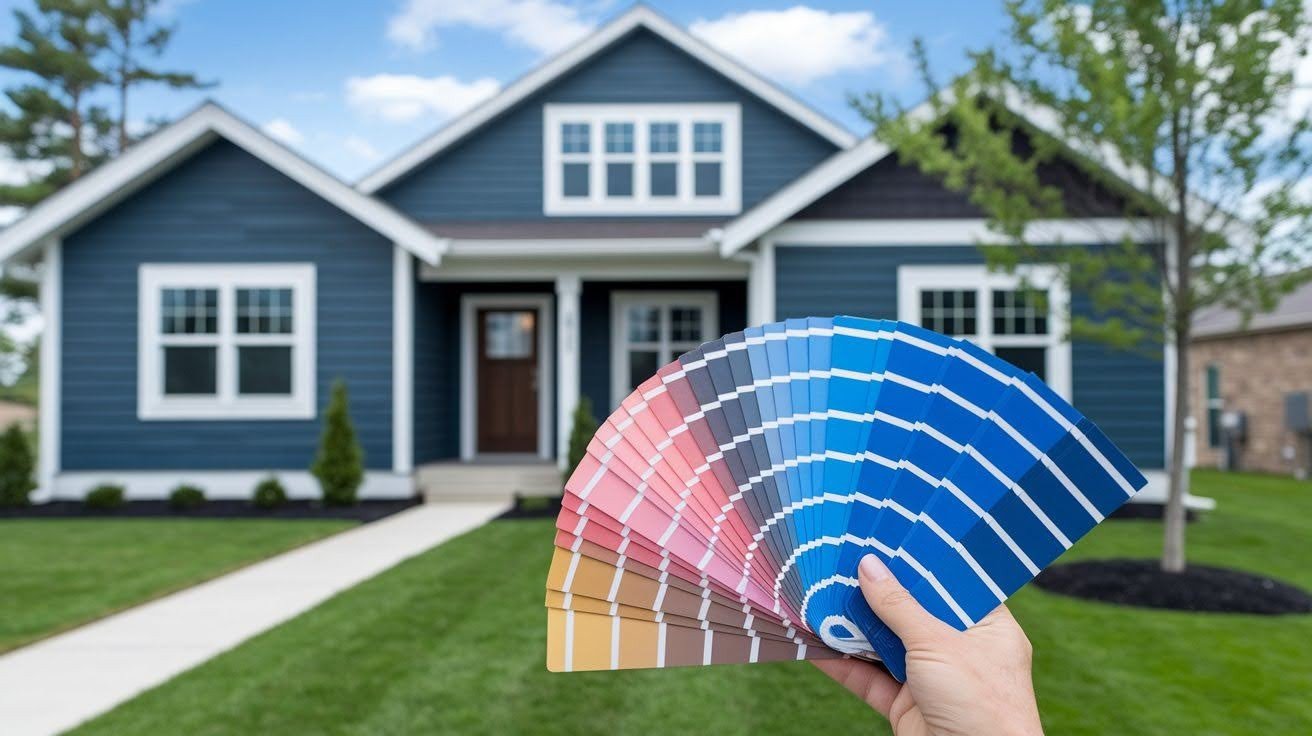
Test colors on different sections of your house before committing. Colors look different in morning light versus afternoon sun. What looks great at noon might look terrible at sunset.
Paint small test patches and check them at various times. Some colors work well in direct sunlight but look washed out in shade. Choose colors you’ll love for years, not just today.
Protecting Outdoor Features

Use painter’s tape and plastic sheets to cover lights, doors, and windows. Paint splatters are nearly impossible to remove from these surfaces.
Take time to protect everything properly before you start painting. Seal plastic sheets tightly with painter’s tape for best protection.
Loose coverings blow around and let paint underneath. Press tape edges down firmly to prevent paint bleeding through gaps.
Moving and Covering Furniture and Equipment

Move outdoor furniture, grills, and equipment away from your house. Paint drips will land on everything nearby. Put items in your garage or far across your yard.
Cover heavy items that can’t be moved with drop cloths. Secure coverings so they don’t blow away during painting. Weight down corners or tie coverings tightly around protected items.
Landscaping Protection Methods
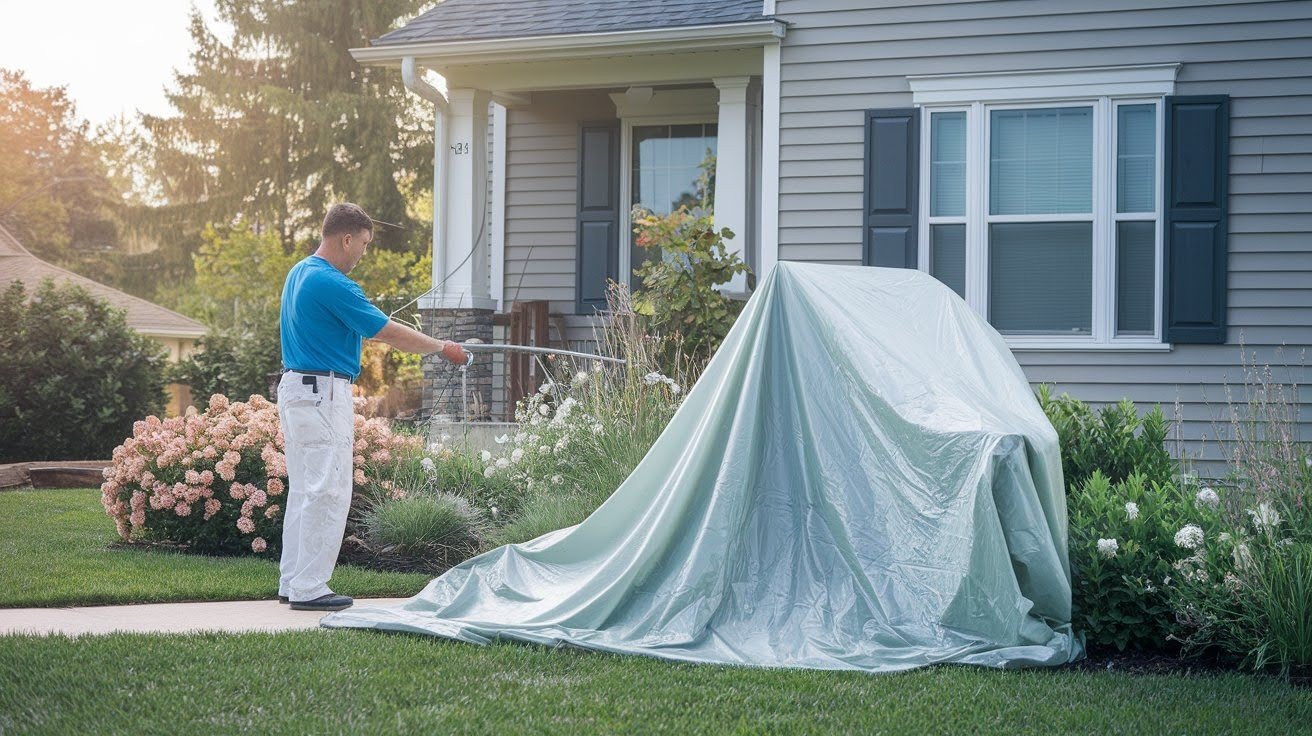
Cover your bushes, flowers, and grass with drop cloths. Paint drips will kill plants and stain your lawn. High-quality painters always protect landscaping because they know paint damage is permanent.
Use enough drop cloths to cover the entire painting area. Don’t try to move one cloth as you work. Buy extra protection because replacing plants costs more than buying drop cloths.
Paint Mixing and Color Consistency
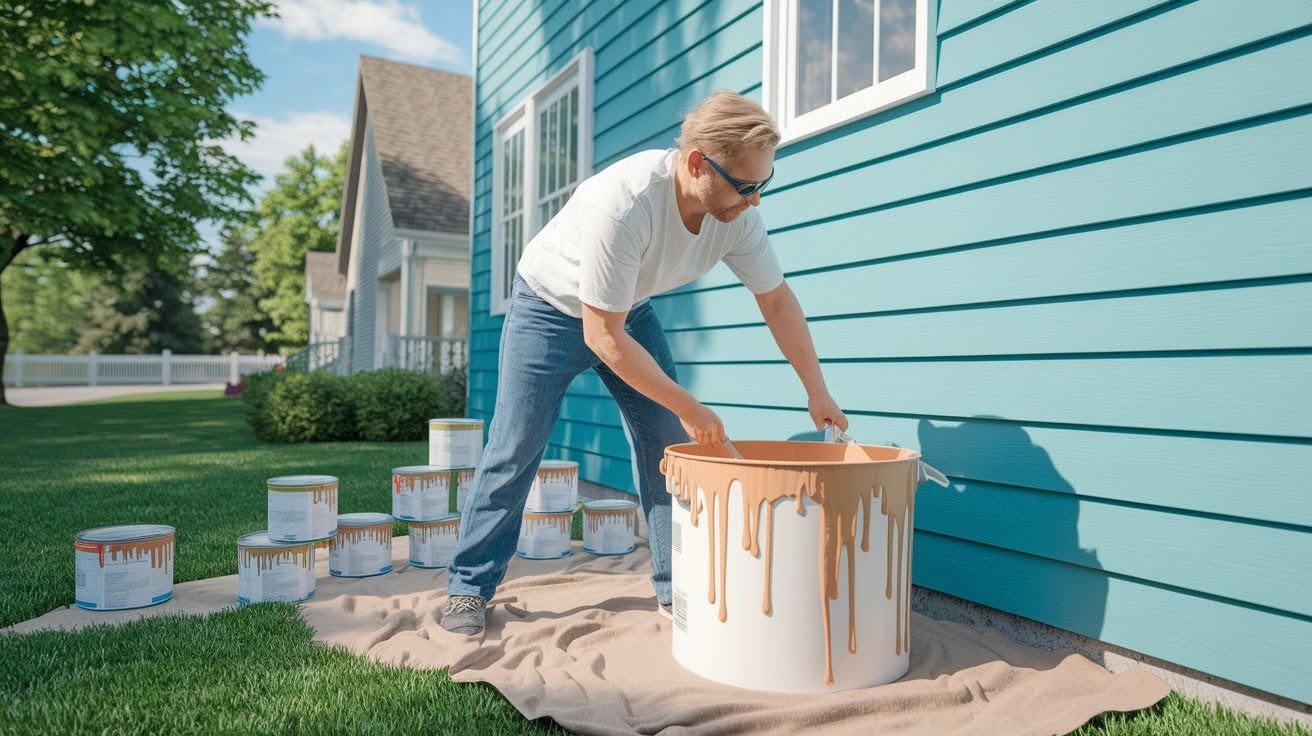
Mix all your paint cans in five-gallon buckets before starting. Even identical paint colors can vary slightly between cans. This “boxing” technique ensures consistent color across your entire house.
Buy more paint than you think you need for color matching. Running out mid-project and buying new paint later risks color differences. Extra paint also helps with future touch-ups and repairs.
Proper Application Methods
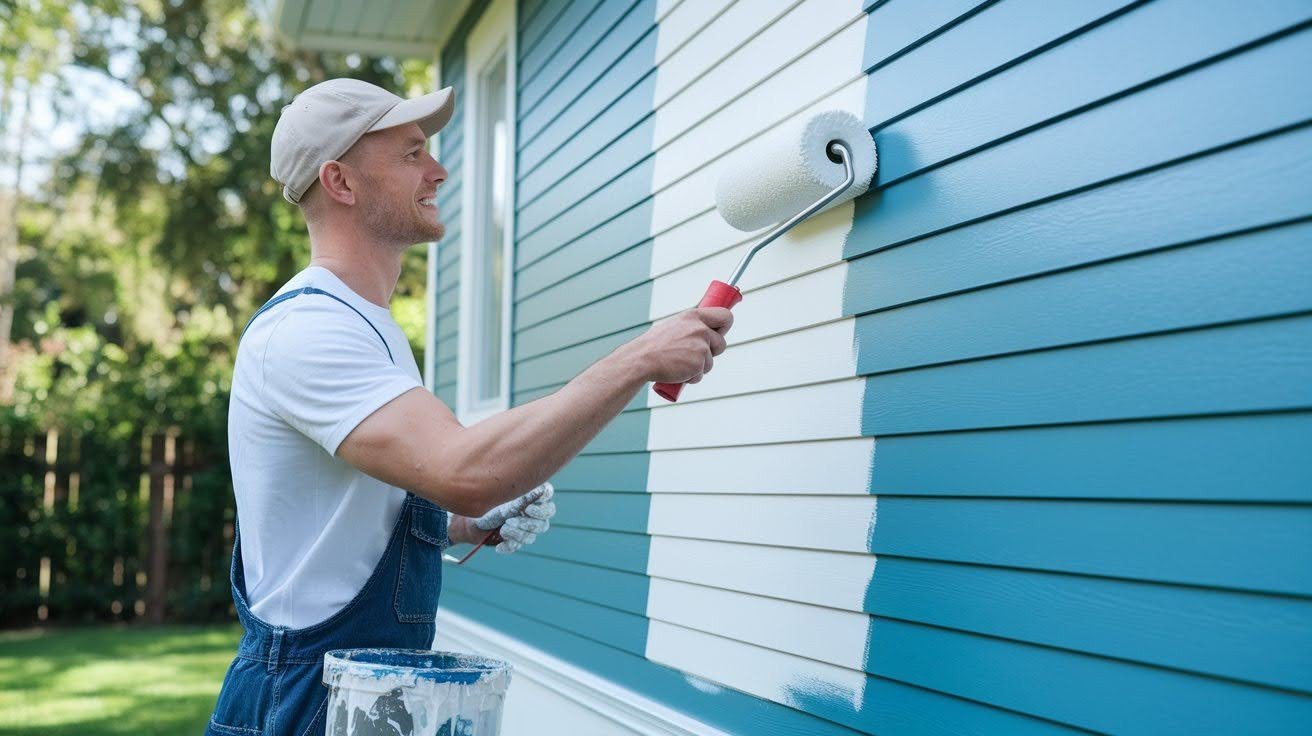
Always paint from the top to the bottom of your house. Work with gravity instead of against it. Drips and splatters happen, but you can cover them as you work downward.
Let gravity help you create smooth, even coverage. This technique prevents streaks and makes drips easier to fix. High-quality painters always follow this top-down method for the best results.
Common Mistakes to Avoid
Avoid these frequent painting errors to ensure a long-lasting, smooth, and quality-looking finish.
- Skipping prep work is the top mistake that causes paint to fail in just a few years.
- Never paint over dirty walls clean them first, or the paint won’t stick properly.y
- Don’t try to cover up damaged or rotten wood with paint – fix the problem first.
- Putting on too many thick coats makes the paint flake off later
- Apply thin, smooth coats instead of thick ones for better results
- Mix your paint well, or you’ll get different colors on different parts of your house
- Poor mixing creates embarrassing color changes that everyone will notice
- Protect your plants, walkways, and furniture before you start painting
- Not covering things leads to expensive cleanup and damage costs
- Make sure ladders and walking areas are safe to avoid accidents and injuries
Tips and Tricks
Follow these practical strategies to maintain your tools, ensure safety, and achieve flawless paint results every time.
- Seal paint containers with rubber mallets and plastic wrap after each day
- Store brushes and rollers in airtight plastic bags overnight to prevent drying
- Replace tools that become stiff or damaged during your project
- Add fine sand to paint for porches and steps to prevent slipping
- Inspect work regularly for thin coverage and missed spots while wet
- Monitor weather changes and stop painting if conditions deteriorate unexpectedly
- Fix adhesion problems immediately while the paint is still workable
Conclusion
These exterior house painting tips can save you from costly mistakes and disappointing results. Remember: good prep work, proper mixing, thin coats, and safety first will give you a paint job that lasts for years.
Your house painting project doesn’t have to be stressful when you know what to avoid. Take time with each step, and you’ll get quality-looking results.
Have you tried any of these tips on your own painting projects? Share your experience in the comments below, or pass this guide along to someone planning their next home improvement project. Your future self will thank you for taking the time to do it right.
Frequently Asked Questions
What’s the most important exterior house painting tip for beginners?
Always do proper prep work first. Clean all surfaces, scrape off loose paint, and fix any damage before painting. Skipping this step is why most DIY paint jobs fail within a few years.
How many coats of paint should I apply to my house exterior?
Apply 2-3 thin coats rather than one thick coat. Thick coats cause bubbling and flaking. Let each coat dry completely before adding the next one for the best results.
What’s the biggest mistake people make with exterior house painting?
Not mixing paint properly. This creates color differences across your house that look low-quality. Always mix paint thoroughly and use paint from the same batch for consistent color.
How do I protect my property during exterior painting?
Cover plants, walkways, and outdoor furniture with plastic sheeting or drop cloths. Remove or cover outdoor decorations. This prevents expensive damage and saves hours of cleanup time.
What safety tips should I follow for exterior house painting?
Use stable ladders on level ground, wear non-slip shoes, and never paint in windy or wet conditions. Have someone spot you when using ladders and take breaks to avoid fatigue.

